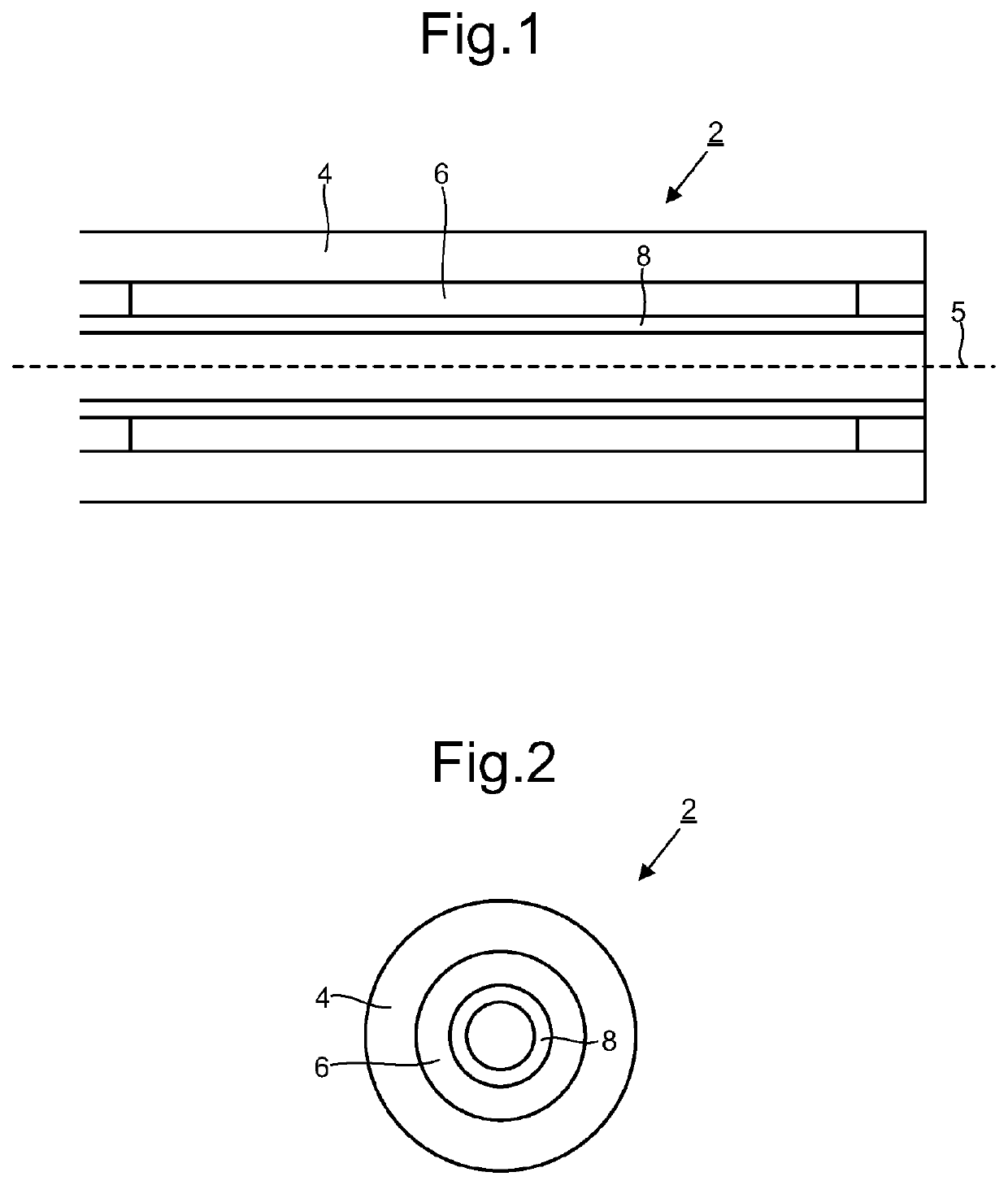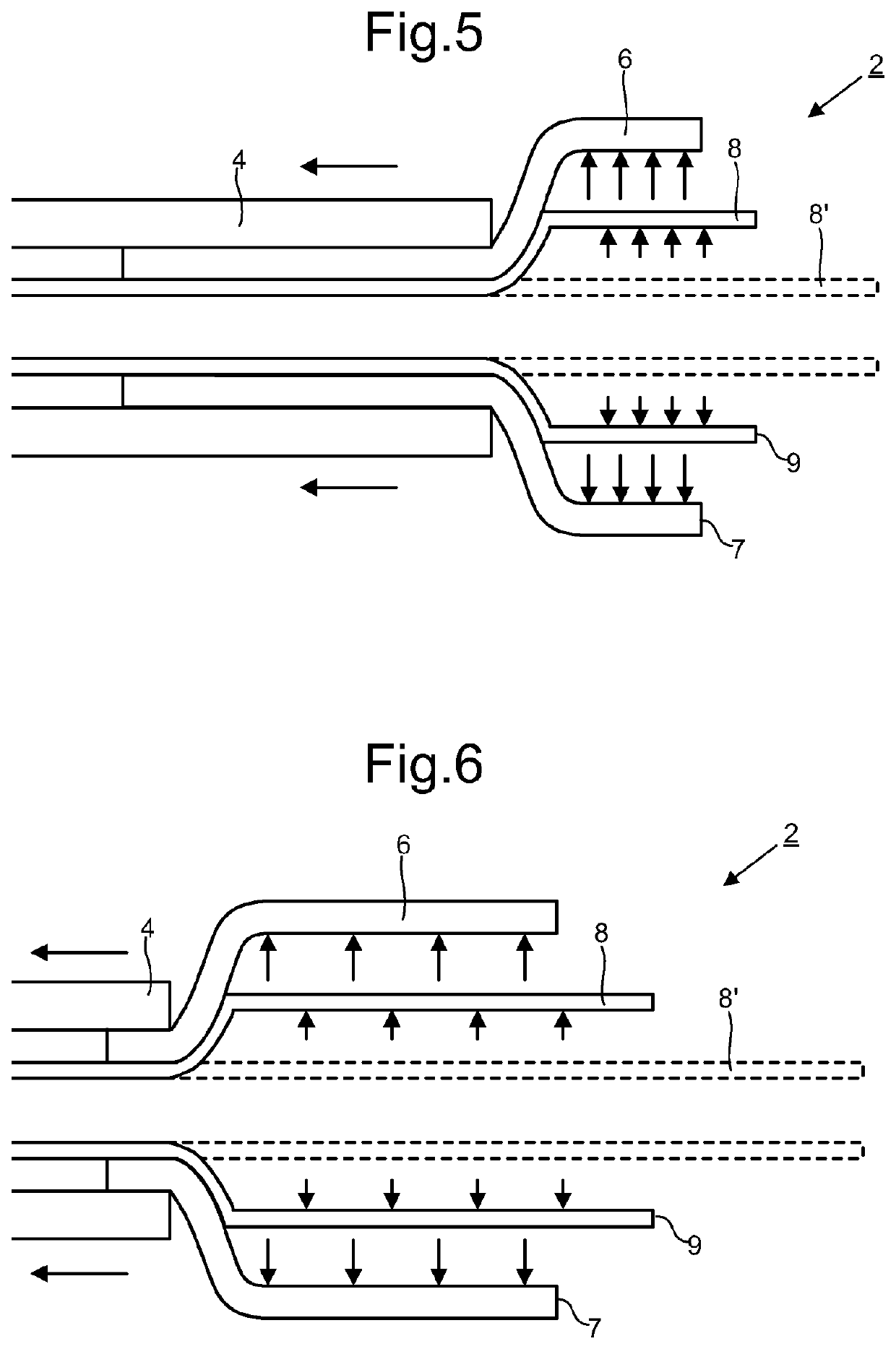Delivery system for deploying a self-expanding tube, and method of deploying a self-expanding tube
a self-expanding tube and delivery system technology, applied in the field of self-expanding tubes, can solve the problems of reducing affecting the optimal deployment of the self-expanding tube in this context, and affecting the service life of the tube, so as to achieve sufficient coverage, reduce the porosity, and reduce the effect of pressure on the surrounding tissu
- Summary
- Abstract
- Description
- Claims
- Application Information
AI Technical Summary
Benefits of technology
Problems solved by technology
Method used
Image
Examples
Embodiment Construction
[0020]Embodiments of the present disclosure provide a delivery system 2 for deploying a self-expanding tube 6 into a blood vessel. The tube 6 may be referred to as a stent. In a preferred embodiment the tube 6 is configured to be positioned across the opening of an aneurismal sac to redirect blood flow away from the aneurismal sac. The redirection of blood flow is preferably sufficient to promote thrombus formation within the sac.
[0021]The delivery system 2 comprises a tubular member 4 configured for insertion into the blood vessel. A distal end of the tubular member 4 is depicted in FIGS. 1 and 2. Tubular members 4 configured for such use are well known in the art of minimally invasive surgery. The tubular member 4 will typically be cylindrical and dimensioned such that its distal end can be brought to the region to be treated with the body. In the case of treating a cerebral aneurysm, the tubular member 4 will be configured so that it can be navigated to the opening of the aneuris...
PUM
 Login to View More
Login to View More Abstract
Description
Claims
Application Information
 Login to View More
Login to View More - R&D
- Intellectual Property
- Life Sciences
- Materials
- Tech Scout
- Unparalleled Data Quality
- Higher Quality Content
- 60% Fewer Hallucinations
Browse by: Latest US Patents, China's latest patents, Technical Efficacy Thesaurus, Application Domain, Technology Topic, Popular Technical Reports.
© 2025 PatSnap. All rights reserved.Legal|Privacy policy|Modern Slavery Act Transparency Statement|Sitemap|About US| Contact US: help@patsnap.com



